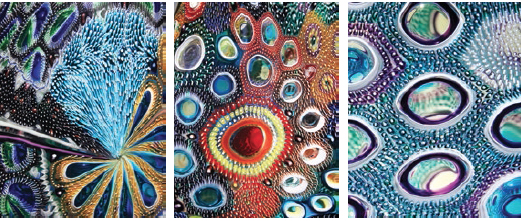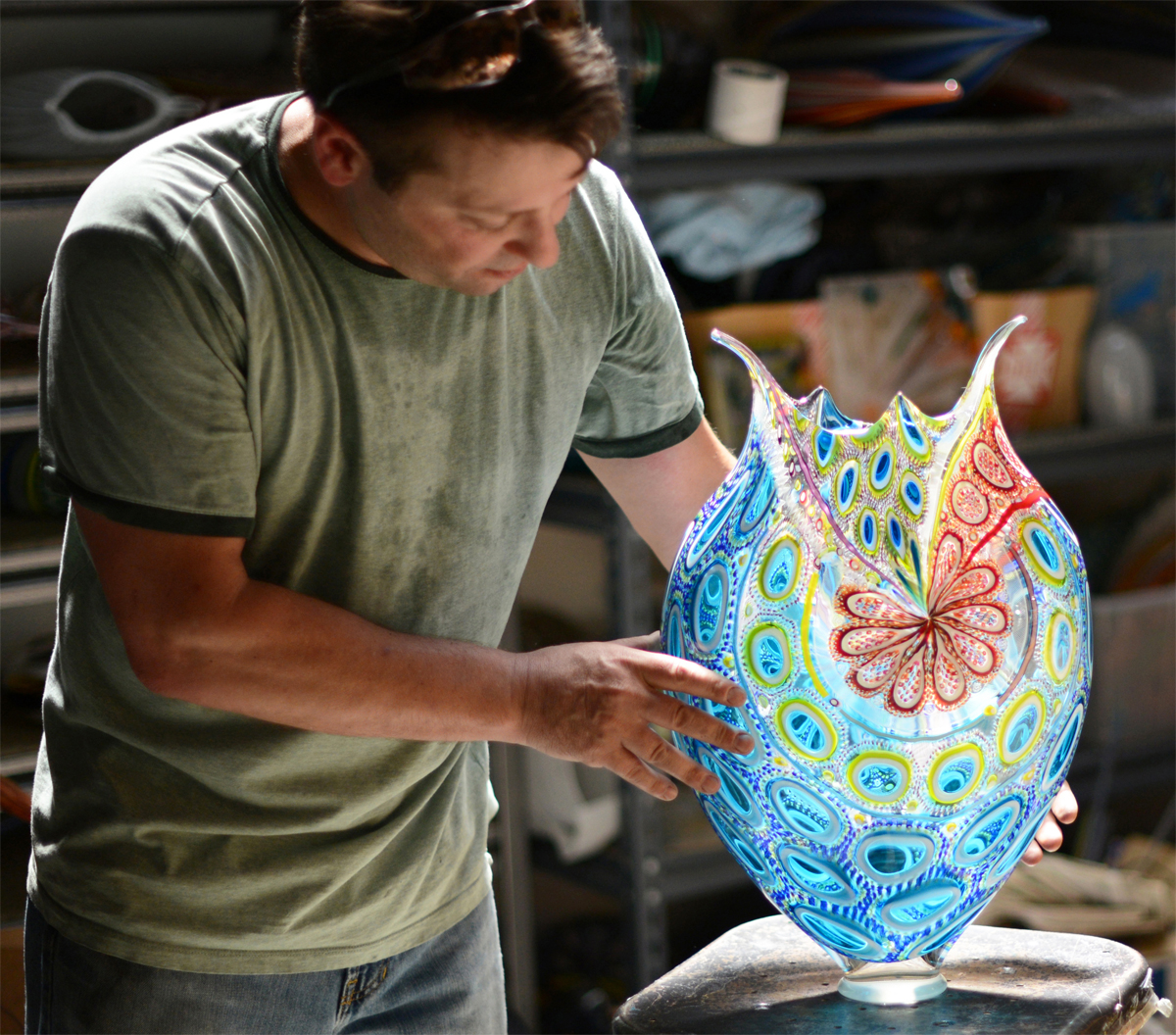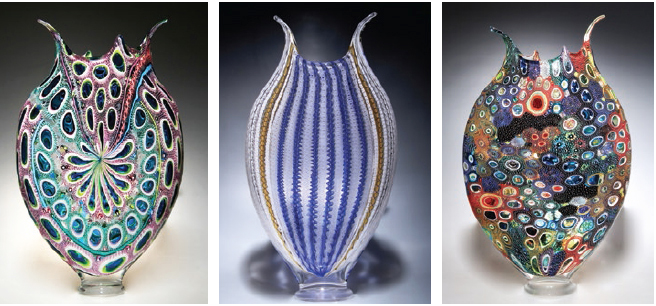From Venice with Love - Page 2
 |
|
|
"His physical skills are extraordinary...He's also exceptionally clearheaded when it comes to his business skills," Roseman noted. "You put it all together and it is just perfect to something like glass."
"He's also very driven. That was one thing that was very apparent."
To better understand Patchen's journey to international success requires an explanation of the age-old techniques the two men were practicing.
Painstaking craft
Roseman was doing what is known as cane glasswork, which involves cutting long rods of clear or colored glass called, of course, cane. Murrine takes that a step further when the artist cuts the cane into cross-sectioned tiles, and then organizes them into patterns to fuse together.
Patchen practices both techniques, and both require two people working in tandem during the hot glasswork.
 |
|
|
"It's kind of a dance between two people, coordinating not only their physical presence in the space and how they move about the shop, [but] timing their movements and timing the heat of things," Patchen explained.
"The assistants I employ are all really skilled, capable glassblowers [themselves]," he adds, noting, "Nothing happens by accident in this line of work."
After those introductory classes at Public Glass "kind of kicked it all off," Patchen has learned blowing and murrine techniques largely by doing, but also in reviewing seminal books by master blower Ed Schmid—and, of course, from that trip to Murano.
The island is still ground central for murrine, and the memories of watching its artists do the aforementioned 'dance' still resonate for him. Patchen made his weeklong sojourn to the Mediterranean in 2004 at the invitation of local artist Afro Cellotto, whom he had connected with through a Glass Art Society conference that year.
 |
|
|
 |
|
|
"I just kind of sat there and watched…I learned a ton just watching for a week," Patchen recalls. His hosts spoke little English, but he remembers being amazed at the way the artists "super calmly" executed the complex process "while cursing at each other and drinking beer."
"It was kind of osmosis, that's how I learned," he suggests. Regardless of the language barrier, he knew the Italians were unlikely to offer much by way of instruction.
"Those guys took it to a whole different level, but they were notoriously secretive in terms of [explaining] the complexity and technique," says Patchen, noting that this attitude is not uncommon in the art world. "Everyone wants to guard their technique because they think it's key to what they make."
What they probably couldn't have taught Patchen, even if so inclined, is the almost instinctual feel for handling molten glass in the precise manner required to make murrine.
"You have to be able to understand the glass. The different colors handle differently," art collector Chris Keck says of what he learned watching the San Francisco artist demonstrate the process at Elder Gallery. In Patchen's case, Keck says, his "feel for the temperature is unbelievable."




